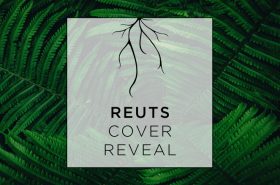After the overwhelming success of Kisa’s (@KisaWhipkey) Sub-Genre Series, I’ll be stepping in next to do the first Book Cover Art Series. Cover Art is quite a beast to take on, so expect this to be the first chapter (of many) breaking down the process– start-to-finish– in creating a print-ready book cover design. And I’ll do my best to post a new chapter in the series every Wednesday.
Unfortunately, different from the editorial phase, cover art requires a certain set of programs to work within, especially if you’re planning on working professionally in the industry. These programs are a part of the Adobe Creative Cloud, including Photoshop, Illustrator and InDesign. Now, all three of these are quite expensive to purchase without the prospect of frequent use, however you’ll see there are online resource we’ve already touched on in a previous blog post: Cover Design On A Budget.
Before we begin the nitty-gritty designing, there are a few key pieces of information needed to set the groundwork. First and foremost, you need to have a book to design for, preferably one that’s nearing completion. Luckily, we have just that! Throughout this series, we’ll be using Kisa’s WIP, titled Unmoving, as the guinea pig for our designing adventures. So, although this is a good start, we usually need more than just a title to begin. In addition to knowing the title we have to work with, these are the elements I request before beginning any Cover Art project:
The Checklist
- Tagline / Sub-Title
- Full Book Synopsis or the Full Manuscript, Itself
- The Author’s Ideal Book Cover Art
- Dimensions of the Printed Book
Tagline / Sub-Title
Although this element isn’t mandatory, I’ll share some examples of popular novels in publication using a tagline to aid in their cover art.

DIVERGENT, by Veronica Roth: “One choice can transform you.”

ACROSS THE UNIVERSE, by Beth Revis: “What does it take to survive aboard a spaceship feared by lies?”

JESSICA’S GUIDE TO DATING ON THE DARK SIDE, by Beth Fantaskley: “The undead can really screw up your senior year.”
Essentially, the tagline expands on the theme or plot of the book, already addressed with the Title and Cover Art. In the case of Divergent, the title itself doesn’t explain much. Throw in the tagline “One choice can transform you,” and, as a reader, we’re given a peak inside the story. There’s some sort of conflict surrounding a decision, a decision serious enough to define the decision maker. This immediately adds prospective tension to the plot, in addition to interest to learn what decision holds so much weight on the main character’s life and future? And how does it all play out?
Consider the tagline added real estate to explain your plot (or tease your readers) when designing. Yes, books are judged (and quickly) by their covers, so they more you can explain in a quick glance, the better odds you have of attracting a reader.
The Author’s Ideal
Although not always feasible, the author’s ideal book cover is a great place to start when brainstorming what the cover art should be. If you’re designing for yourself, this part is easy. You know your story best, and how best you’d like to represent it. If you’re designing for another author, on the other hand, instead of stressing out trying to figure out what’s in the author’s head, just ask them! Sometimes it may be difficult to put to words, but if your author is able to visualize in their mind’s eye what type of cover they’d classify as ideal, you’re off to a great start. It may be difficult to make that ideal into a reality (e.g. finding the right stock photos could prove to be a challenge), but from this starting point you can begin collaboration and brainstorming how to meld together the author’s vision, with your creative input and own interpretation of the story.
Always remember: the best design is born out of collaboration. If you’re able to bounce ideas off of more than one individual, including the author, you’ll always come out with a stronger, more powerful design. So always feel free to seek input from friends, family, your team (in my case, the REUTS Acquisitions Team), etc… Trust me, you’ll appreciate the additional eyes, and create a better cover.
Dimensions
This one is tricky to get right off the bat. The standard book size REUTS uses is 5.5″x8.5″, however it can range from 5″x7″ to 6″x9″, and a few stragglers larger or smaller than those. Unfortunately, it takes a fully type-set book to determine the full cover dimensions. If you follow the 5.5″x8.5″ standard, you know the size to work within for the front and back cover, just not the spine. The final number of pages within your book will effect how thick or thin the spin ends up in print*. Since we are lacking information at the start of a new project, I usually like to nail down the front cover art, and bring those elements/themes into the back cover, then add the spin width once it’s determined.
Many times, a printer will provide you with a design template to work within once they finalize dimensions. In this case, it’s always safe to initial comp a larger cover size, and have to edit them down, than try to increase their size. Increasing anything from its original size in Photoshop that isn’t a vector will cause distortion and pixilation.
Always remember: Include a bleed in your working cover art file. It varies between printers, but you can be safe adding .25″ – .5″ around your artwork to account for any cutting idiosyncrasies when the book is in production.
*Obviously, this step can be disregarded if you’re focusing solely on an eBook cover design
Stay tuned for next week’s post where we’ve gathered all the information needed, and begin brainstorming for Kisa’s story, Unmoving.


